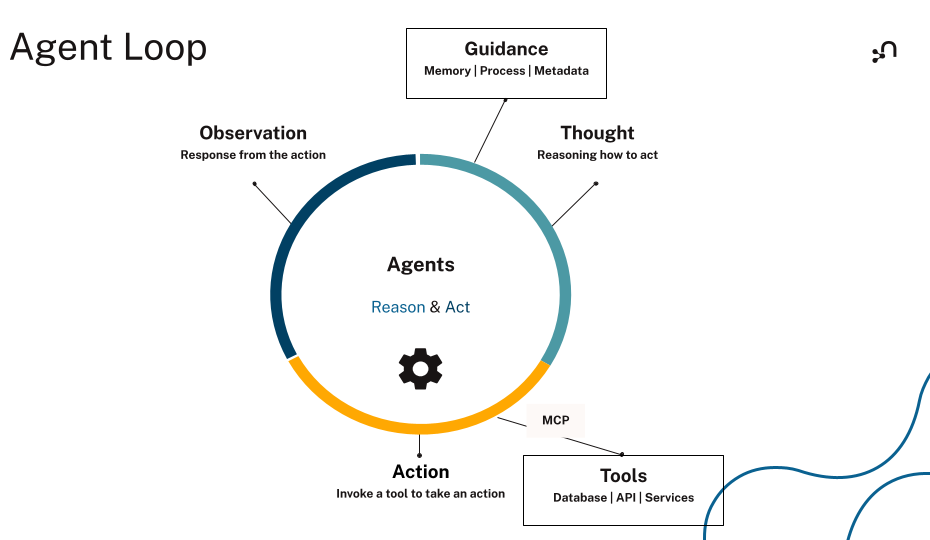AI Agents Explained How They Think Act and Solve Problems
Discover how AI agents leverage tools memory and reasoning to complete complex tasks beyond traditional LLMs Learn their components use cases and future
Artificial Intelligence (AI) has taken a significant leap with the emergence of AI agents, applications that utilize Generative AI (GenAI) models to autonomously think and act toward achieving goals. Unlike traditional Large Language Models (LLMs), which primarily generate text responses, AI agents integrate reasoning, tool usage, and iterative execution loops to solve complex tasks.
Core Components of AI Agents
AI agents consist of three fundamental components:
- Model: Typically an LLM that serves as the "brain," responsible for planning, reasoning, and decision-making.
- Tools: External systems like databases, APIs, or computational engines that agents use to retrieve data or perform actions.
- Orchestration: Engines that manage the agent's workflow, including memory, context, and iterative loops.
How AI Agents Operate
The most common agent pattern is ReAct (Reason, Act, Observe, Repeat/Finish):
- Reason: The agent interprets user requests, identifies gaps, and plans actionable steps.
- Act: It selects and invokes tools to gather information or perform tasks.
- Observe: The agent assesses tool outputs, updating its context.
- Repeat or Finish: It evaluates progress, looping back or concluding based on task completion.

The Role of Knowledge Graphs
AI agents rely heavily on structured context provided by knowledge graphs—semantic networks that store relationships between entities. This enables:
- Multi-hop reasoning: Traversing connections between data points.
- Reduced hallucinations: Improving accuracy by grounding responses in verified facts.
- Explainability: Tracing decision paths for auditing.

Real-World Applications
AI agents are transforming industries:
- Healthcare: Diagnosing symptoms, suggesting treatments, and monitoring patient data.
- Finance: Detecting fraud, reconciling transactions, and predicting cash flow.
- Customer Service: Handling complex inquiries and escalating cases.
- Legal: Reviewing contracts and ensuring compliance.
Challenges and Risks
While promising, AI agents face hurdles:
- Infinite loops: Agents may get stuck repeating actions.
- Hallucinations: Misusing tools or generating incorrect data.
- Security: Ensuring safe tool integrations and data privacy.
Strategies to mitigate risks include:
- Circuit breakers: Preventing endless loops.
- Validation steps: Cross-checking outputs.
- Role-based access: Limiting data exposure.
Future Outlook
The shift from static LLMs to dynamic agents signifies AI's evolution toward autonomy. Developers are adopting frameworks like LangGraph and integrating knowledge graphs (Neo4j) to enhance reasoning.
As AI agents mature, they promise to revolutionize workflows—transforming users from manual operators into supervisors of intelligent, goal-driven systems.
Related News
Beginner-Friendly AI Agent Projects to Learn and Build
Explore five practical AI agent projects for beginners, covering scheduling, coding, content creation, research, and search functionalities.
Claude Sonnet 4 5 Advances AI Agents Toward OS Like Capabilities
Anthropic's Claude Sonnet 4.5 coding model demonstrates how AI agents could evolve into dynamic operating systems, raising questions about future app development and security.
About the Author

David Chen
AI Startup Analyst
Senior analyst focusing on AI startup ecosystem with 11 years of venture capital and startup analysis experience. Former member of Sequoia Capital AI investment team, now independent analyst writing AI startup and investment analysis articles for Forbes, Harvard Business Review and other publications.